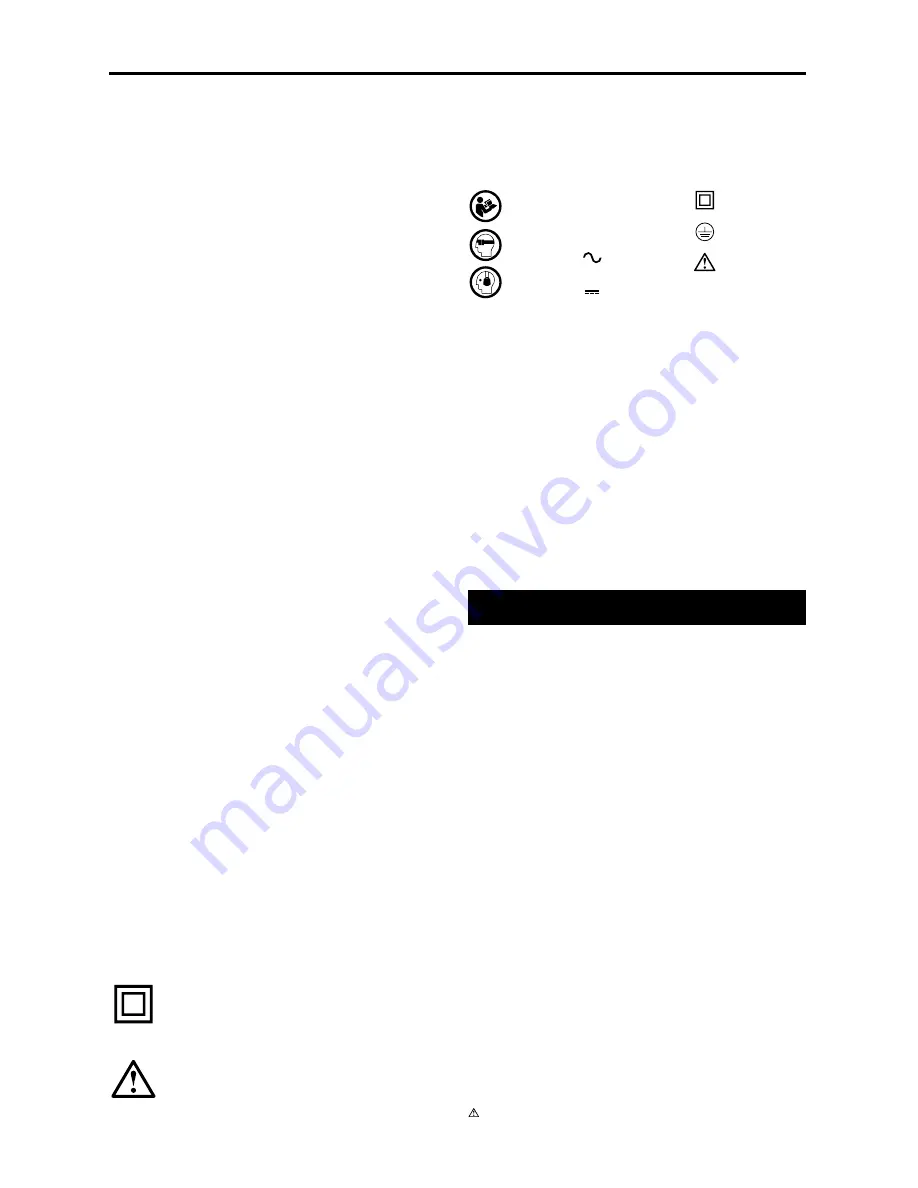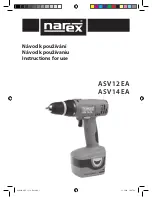
16 • ENGLISH
making
any adjustments, changing accessories,
or storing power tools. Such preventive safety measures
reduce the risk of starting the power tool accidentally.
d. Store idle power tools out of the reach of children
and do not allow persons unfamiliar with the power
tool or these instructions to operate the power
tool.
Power tools are dangerous in the hands
of untrained users.
e. Maintain power tools. Check for misalignment
or binding of moving parts, breakage of parts and
any other condition that may affect the power
tools operation. If damaged, have the power tool
repaired before use. Many accidents are caused by
poorly maintained power tools.
f. Keep cutting tools sharp and clean. Properly
maintained cutting tools with sharp cutting edges are
less likely to bind and are easier to control.
5. Battery tool use and care
a. Recharge only with the charger specified by the
manufacturer. A charger that is suitable for one type
of battery pack may create a risk of fire when used
with another battery pack.
b. Use power tools only with specifically designated
battery packs. Use of any other battery packs may
create a risk of injury and fire.
c. When battery pack is not in use, keep it away
from other metal objects, like paper clips, coins,
keys, nails, screws, or other small metal objects,
that can make a connection from one terminal
to another. Shorting the battery terminals together
may cause burns or a fire.
d. Under abusive conditions, liquid may be ejected
from the battery; avoid contact. If contact
accidentally occurs, flush with water. If liquid
contacts eyes, additionally seek medical help. Liquid
ejected from the battery may cause irritation or burns.
6. Service
a. Have your power tool serviced by a qualified
repair person using only identical replacement
parts. This will ensure that the safety of the power
tool is maintained.
7. Electrical safety
Your tool is double insulated; therefore no earth
wire is required. Always check that the main voltage
corresponds to the voltage on the rating plate.
Warning! If the power cord is damaged, it must
be replaced by the manufacturer, authorized
BLACK+DECKER Service Center or an equally
qualified person in order to avoid damage or
injury. If the power cord is replaced by an equally
qualified person, but not authorized by BLACK+DECKER,
the warranty will not be valid.
8. Labels on tool
The label on your tool may include the following symbols:
FEATURES (Fig. A)
1. On/Off switch
2. Forward/Reverse slider
3. Pivot release button
4. Torque adjustment ring
5. Bit holder
6. LED light
7. Charger
8. Charger plug
9. Charger connector
SPECIAL SAFETY INSTRUCTIONS
f
Hold the power tool by the insulated grips when
working in areas where the bits can come into contact
with concealed electrical cables. Contact with a live
cable will cause the metal parts on the tool to also
become live – risk of electric shock.
f
Secure the workpiece on a stable surface with clamps,
or the like. Holding the workpiece in your hand or
against your body will not give you a sufficiently firm
grip and can cause you to loose control.
f
Do not drill, screw or drive in existing walls or other
areas where there may be hidden electrical cables.
If this is unavoidable, remove/switch off all fuses/
circuit breakers for the circuits affected by the work.
f
Battery-powered tools are ready for use when the
battery is inserted – risk of unintentional start.
f
Always wear safety glasses or other eye protection
when working with the tool.
f
Make sure to properly insert bits/shanks into the chuck,
otherwise they could come loose during the work.
f
Do not start the tool when carrying it by your side.
Rotating bits can get caught in clothes and cause
personal injury.
f
Do not use dull or damaged bits and accessories.
Dull or damaged bits jam easier in the workpiece.
Warning! Some types of dust produced during sanding,
sawing, polishing and drilling etc. contain chemicals that
Read
Instructions
Manual
Use Eye
Protection
Use Ear
Protection
V ........ Volts
A ........ Amperes
Hz ....... Hertz
W ........ Watts
min ..... minutes
..... Alternating
Current
..... Direct
Current
n
0
....... No-Load
Speed
...... Class II
Construction
.... Earthing
Terminal
.... Safety Alert
Symbol
.../min.. Revolutions
or Recipro-
cation per
minute





































